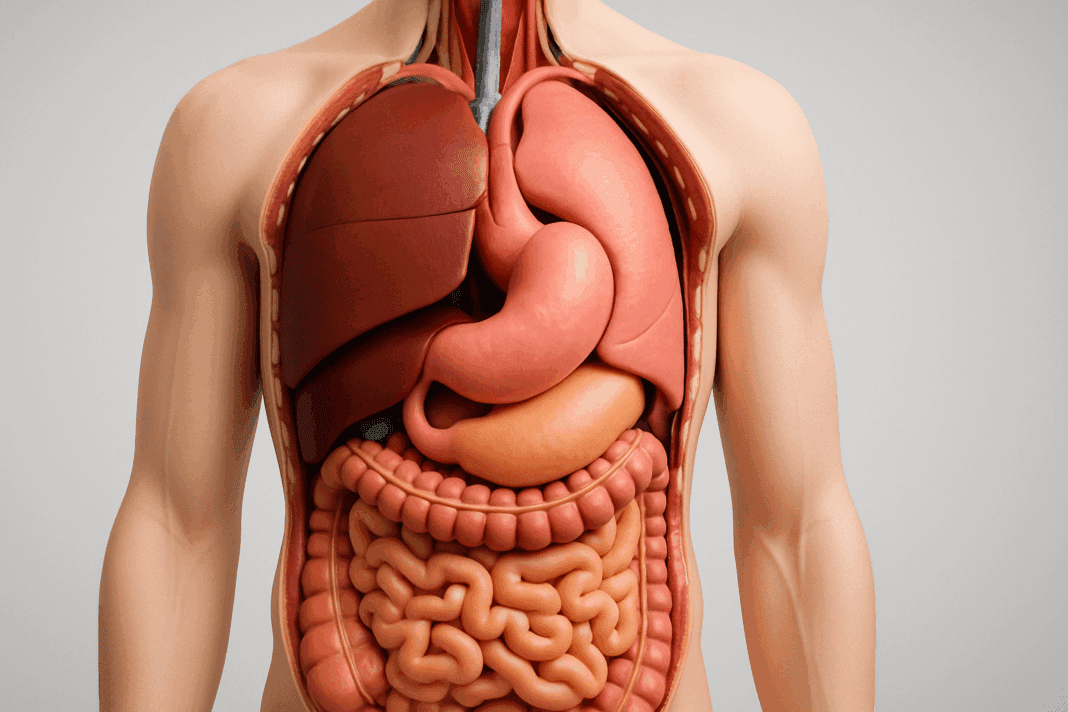Understanding the layout of your internal organs is more than an exercise in academic curiosity. It’s a foundational part of taking ownership of your health. When people ask, “Where is your stomach?” or want to know “what side is the stomach on,” they’re typically not just looking for anatomical trivia. Often, these questions arise from discomfort, digestive symptoms, or a desire to better understand body signals. By accurately locating your stomach and identifying the organs that reside on the right side of your body, you are empowered with knowledge that supports preventive care, early detection of issues, and more meaningful conversations with healthcare providers.
Let’s take a deeper look at the position and function of the stomach, explore what organs are on the right side of your body, and consult a clear, evidence-based stomach diagram to bring it all together. With medical accuracy and clarity, this guide is designed to be a trustworthy, engaging, and practical resource that aligns with the principles of Experience, Expertise, Authoritativeness, and Trustworthiness (EEAT).
You may also like: Macronutrients vs Micronutrients: What the Simple Definition of Macronutrients Reveals About Your Diet and Health

Understanding the Role and Location of the Stomach
The stomach is a central organ in the digestive system, responsible for breaking down food with the aid of gastric acid and enzymes. Its role is not merely mechanical—it is also biochemical, initiating the digestion of proteins and regulating the passage of partially digested food into the small intestine. If you’ve ever felt a burning sensation in your upper abdomen, chances are you’ve become acutely aware of where your stomach is, even if you couldn’t pinpoint its exact location.
In terms of location, the stomach resides in the upper left quadrant of the abdomen, just beneath the diaphragm and to the left of the liver. When patients ask, “what side is the stomach on,” the correct answer is the left. However, it does extend somewhat toward the midline and even touches the upper center portion of the abdomen in certain positions or during digestion. This is why localized discomfort might feel centralized even if the stomach is technically offset to the left.
Knowing where your stomach is helps differentiate between digestive issues and problems that might arise from other organs. For instance, gallbladder pain on the right side of your body is often confused with gastric distress. This reinforces the importance of having a solid anatomical framework, especially one that includes an accurate stomach diagram.
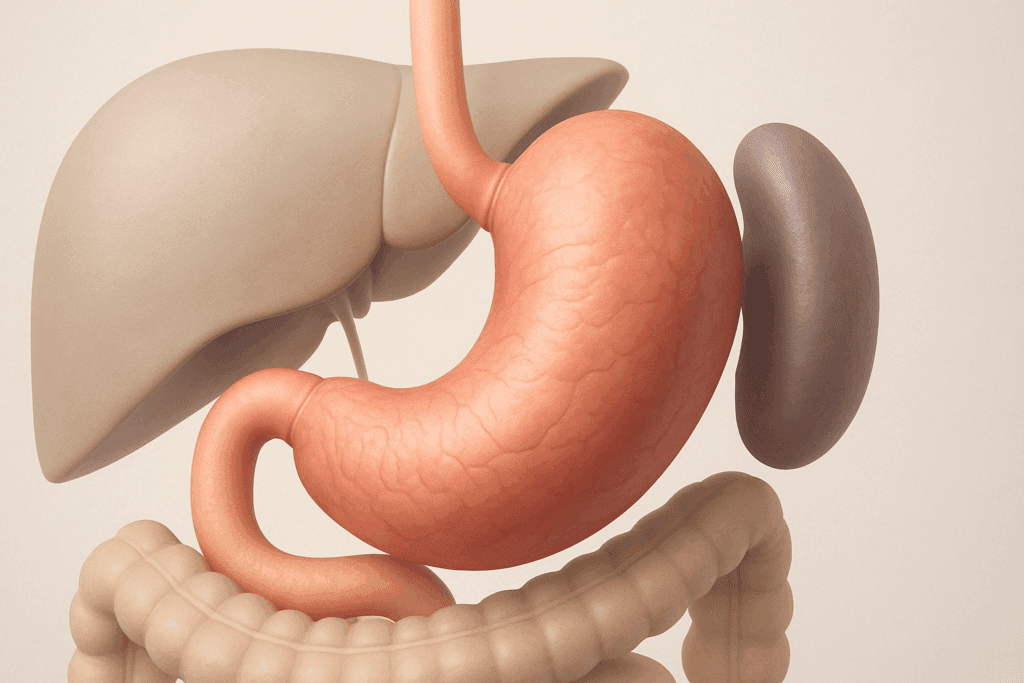
Exploring the Stomach Diagram and Its Clinical Relevance
A stomach diagram isn’t just a tool for medical students—it’s a helpful visual aid for anyone trying to understand their health. These diagrams typically show the stomach as a J-shaped organ nestled between the esophagus and the small intestine. It is connected to the esophagus at the top via the lower esophageal sphincter and to the duodenum at the bottom through the pyloric sphincter. Seeing this arrangement makes it easier to understand how issues like acid reflux, ulcers, or delayed gastric emptying can arise.
When you view a properly labeled stomach diagram, you can see how the stomach curves and folds, and how it relates spatially to nearby organs. The left side of the body houses the spleen and a portion of the pancreas, both of which share some proximity to the stomach. This adjacency is relevant when interpreting symptoms such as bloating, sharp pains, or pressure.
The diagram also helps clarify why certain foods or medications might irritate the stomach lining. For example, NSAIDs can thin the protective mucus layer of the stomach, leading to ulcers. Understanding this visually—and spatially—adds an extra layer of practical knowledge that can influence how patients approach self-care, diet, and medication use.
Where Is Your Stomach in Relation to Other Digestive Organs?
The position of the stomach relative to other digestive organs underscores its functional importance. Above the stomach lies the diaphragm, a muscle essential for breathing but also relevant to intra-abdominal pressure changes. To the right of the stomach sits the liver, a powerhouse organ that contributes bile to the digestive process via the gallbladder. Below the stomach, the small intestine—beginning with the duodenum—continues the digestive journey.
Asking “where is your stomach” also opens up a broader conversation about how interconnected the abdominal organs are. The pancreas, for instance, lies just behind the stomach and secretes insulin and digestive enzymes. The esophagus travels downward and connects to the top of the stomach, allowing for the ingestion of food and drink. By considering these relationships, it becomes easier to understand why a problem in one organ often influences others, leading to complex symptom presentations.
Having a clear grasp of the stomach’s orientation enables patients to be more precise when reporting symptoms to their doctors. Is the discomfort truly in the stomach, or is it gallbladder-related? Is it central or left-sided pain? Is it sharp and episodic or dull and persistent? These distinctions are often critical for making an accurate diagnosis.
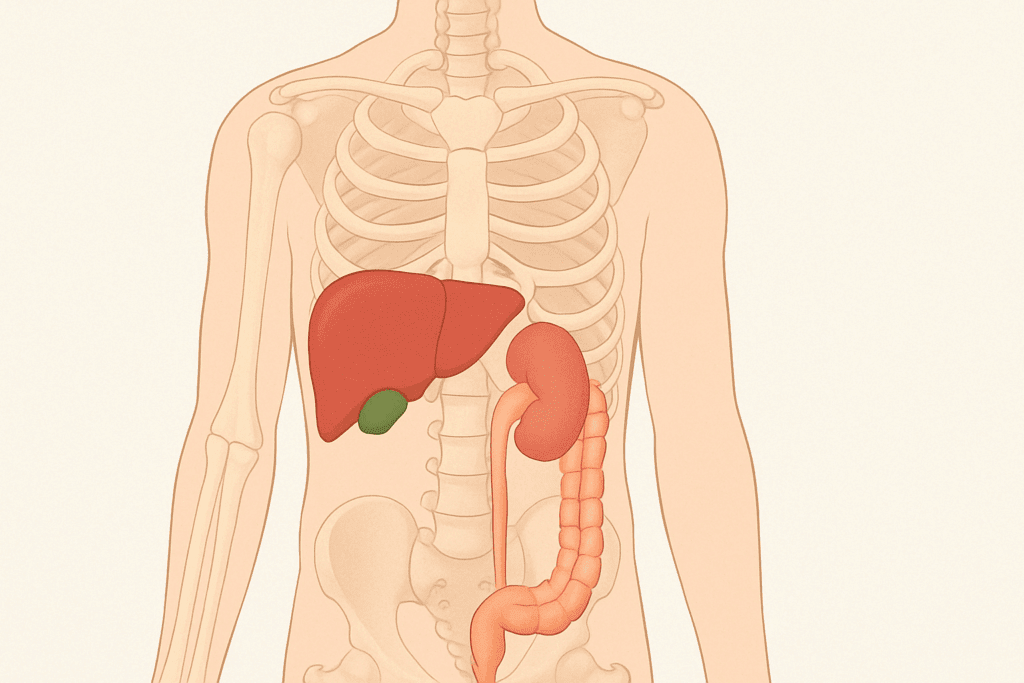
What Organs Are on the Right Side of Your Body?
When people experience pain or pressure on one side of their body, particularly the right, they often wonder, “what organs are on the right side of your body?” The answer encompasses several critical systems. Most prominently, the liver dominates the right upper quadrant of the abdomen. It is the largest solid organ in the body and is involved in hundreds of essential functions, including detoxification, protein synthesis, and bile production.
Just beneath the liver is the gallbladder, a small, pouch-like organ that stores and concentrates bile. Problems here can lead to gallstones or inflammation, known as cholecystitis, which often causes sharp pain in the upper right abdomen. The right kidney is also located toward the back, under the ribcage, playing an essential role in filtering blood and maintaining fluid balance.
Lower down on the right side lies a portion of the large intestine, specifically the ascending colon. The appendix, a small tube-like structure, also resides in the lower right quadrant and is infamous for causing acute right-sided pain when inflamed. These various organs contribute to a complex anatomical and functional map that must be understood when interpreting symptoms. When someone says, “I have pain on my right side,” a differential diagnosis could range from kidney stones to appendicitis to gallbladder disease.
Why Understanding Organ Location Matters for Preventive Wellness
Knowledge about organ placement is more than academic—it plays a vital role in preventive healthcare. For example, understanding that the liver is on the right side can help individuals recognize signs of hepatic distress, such as localized pain or jaundice. Recognizing that your stomach is slightly to the left and center helps differentiate between true gastric discomfort and referred pain from other sources like the pancreas or heart.
This knowledge becomes even more critical when people engage in self-assessments or use digital health tools. Mobile apps and symptom checkers often ask users to indicate where the pain is. Answering that accurately can significantly influence the advice or urgency assigned by these tools. Furthermore, being aware of your internal anatomy encourages more meaningful, productive conversations during medical appointments.
In nutritional terms, knowing where your stomach is can help guide how you eat. Eating slowly, avoiding large meals before bed, and staying upright after eating are all practices that respect the stomach’s structure and function. People who understand how the stomach connects to the rest of the digestive system are also more likely to consider the broader implications of their diet on health outcomes such as GERD, indigestion, and nutrient absorption.
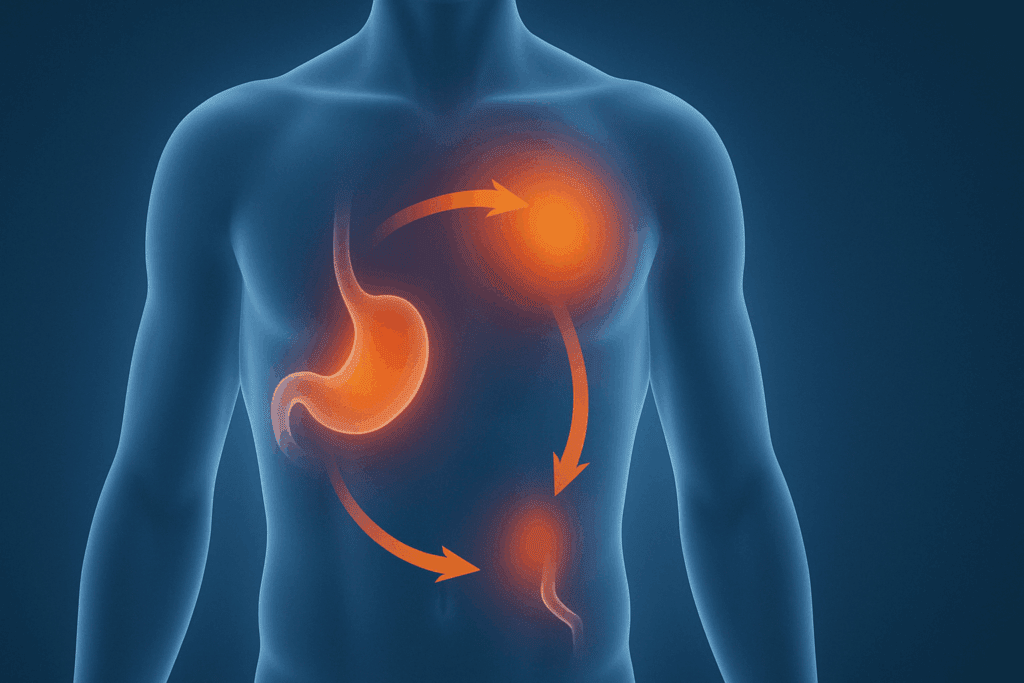
Digestive Symptoms and Their Possible Origins
Distinguishing between different abdominal symptoms requires a solid understanding of where the stomach and other nearby organs are located. For instance, a dull ache in the upper middle abdomen may stem from gastric irritation, while stabbing pain on the right side could suggest gallbladder or liver involvement. Bloating and fullness often point back to delayed gastric emptying or problems in the small intestine, while right-lower abdominal pain could be a sign of appendicitis, especially if accompanied by fever and nausea.
Even symptoms like back pain can be referred from abdominal organs. The pancreas, for example, lies behind the stomach and can cause radiating pain to the back when inflamed. The kidneys, located toward the back on either side of the spine, can also mimic muscular or skeletal pain. This highlights how vital it is to not only know where your stomach is but also understand what organs are on the right side of your body and how each can manifest distress in unique, sometimes misleading ways.
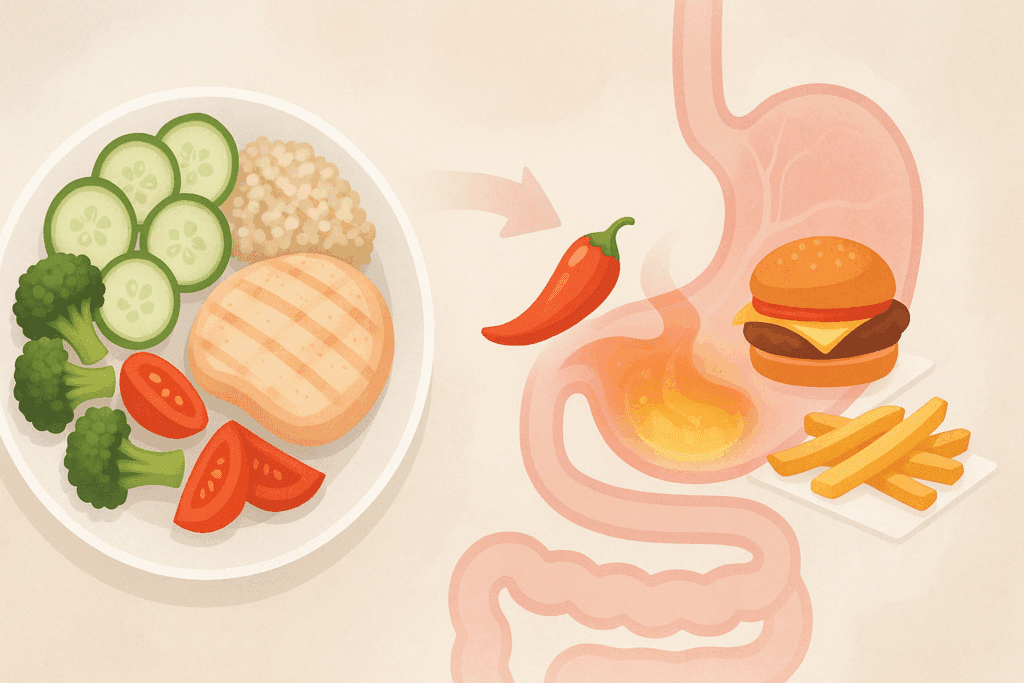
The Link Between Nutrition and Stomach Function
The foods we eat have a direct impact on how well our stomach functions, making nutritional awareness an essential aspect of digestive health. When we consider where the stomach is located and how it operates, it becomes evident that habits like overeating, consuming high-fat meals, or drinking carbonated beverages can disrupt normal gastric activity. These choices can increase pressure in the stomach, exacerbate reflux, and lead to symptoms like heartburn, bloating, or discomfort.
Understanding your own stomach diagram and its orientation can also influence how you approach diet. For example, small, frequent meals may be easier on the stomach compared to large, heavy dinners. Certain positions, such as lying down after eating, can worsen symptoms for individuals with reflux. Foods that are acidic, spicy, or fried may irritate the stomach lining and should be consumed in moderation or avoided altogether by those with sensitive stomachs.
The link between nutrition and abdominal organ function also extends to the right side of the body. The liver and gallbladder both process and store substances related to fat digestion. Diets high in unhealthy fats can strain these organs, leading to gallstone formation or fatty liver disease. Thus, the seemingly simple question of “what side is the stomach on” can serve as the beginning of a more complex and beneficial inquiry into nutrition and wellness.
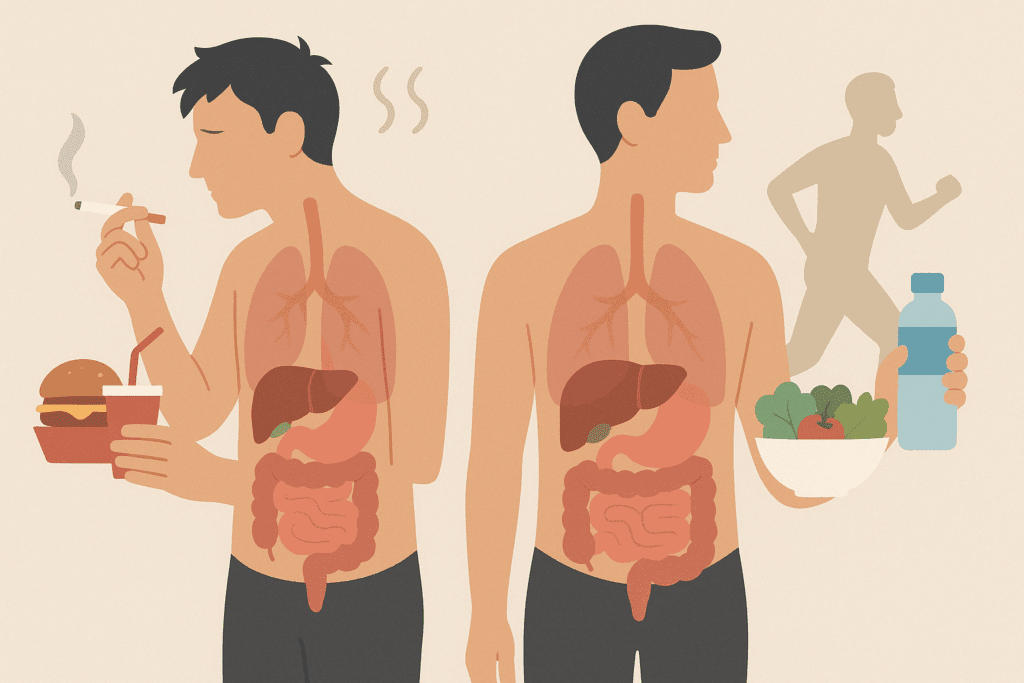
How Lifestyle Choices Influence Digestive Organ Health
Beyond food choices, lifestyle habits also play a pivotal role in supporting or undermining the health of the stomach and other right-sided organs. Stress, for instance, has been shown to negatively impact stomach function, leading to increased acid production and a higher risk of ulcers. Smoking and excessive alcohol consumption are well-known risk factors for damage to both the stomach lining and liver. Sedentary behavior contributes to slowed digestion and impaired bowel movements, which can affect everything from the stomach to the colon.
Regular physical activity, on the other hand, supports digestion by enhancing gut motility and reducing the risk of gallbladder disease. Hydration is another often-overlooked factor that benefits both the kidneys and the digestive tract. Choosing habits that honor the delicate balance of the digestive system—from where your stomach is to what organs are on the right side of your body—can create long-term health dividends that are both preventive and therapeutic.
When to See a Doctor About Abdominal Pain or Discomfort
While self-awareness is powerful, it is no substitute for professional medical evaluation. If you’re consistently experiencing symptoms that relate to the stomach or other right-sided organs, such as chronic bloating, sharp pain, unexplained weight loss, or persistent nausea, it’s time to seek medical advice. A physician will conduct a detailed history, perform a physical exam, and may order imaging tests to further evaluate your symptoms. Often, ultrasound, CT scans, or endoscopy are used to visualize structures like the gallbladder, liver, and stomach to identify potential problems.
Understanding where your stomach is and knowing what organs are on the right side of your body can make you a more informed and proactive patient. But when symptoms persist or worsen, a timely visit to a healthcare provider is essential. Early intervention often leads to better outcomes, particularly for conditions like gallstones, ulcers, and appendicitis, where prompt treatment can prevent complications.
Frequently Asked Questions: Where Is Your Stomach Located and What Organs Are on the Right Side of Your Body?
1. Can anxiety or stress affect the location of stomach-related discomfort?
Yes, anxiety can create sensations that mimic gastrointestinal issues, often leading people to wonder where is your stomach located when they feel tightness or fluttering. Stress doesn’t physically move the stomach, but it can heighten sensitivity in the upper abdomen, especially on the left side where the stomach resides. The brain-gut connection is well documented, and emotional distress can alter gut motility, increase acid production, or cause muscle spasms in the digestive tract. This can lead to functional symptoms that feel as real as organic disorders, especially in the region where your stomach is located. Understanding this connection helps distinguish between psychological and physiological triggers.
2. Why is it important to know what organs are on the right side of your body if you’re experiencing lower abdominal pain?
Many people assume lower abdominal pain is general or gynecological, but knowing what organs are on the right side of your body clarifies what might be going wrong. In the lower right quadrant, structures such as the appendix and ascending colon play a key role. Pain here can signal appendicitis, right-sided diverticulitis, or even kidney infections if it radiates toward the back. By understanding the anatomy of the right side, patients can better communicate with providers and avoid misdiagnosis. Even small differences in pain location can distinguish between urgent and non-urgent conditions.
3. Does a stomach diagram help in understanding post-surgical symptoms?
Absolutely. A detailed stomach diagram provides a visual roadmap that is particularly useful after procedures like gastric bypass, ulcer repair, or laparoscopic surgery. Post-operative symptoms can feel vague, but knowing exactly where your stomach was manipulated allows for more precise symptom tracking. When patients ask what side is the stomach on post-surgery, the answer can vary slightly depending on repositioning or swelling. A diagram reinforces this shifting anatomy and supports informed recovery monitoring.
4. Are stomach sensations ever confused with issues on the right side of the body?
Yes, and this happens more frequently than people realize. Because the stomach is located centrally and slightly to the left, it’s often mistaken for liver or gallbladder pain when discomfort radiates or intensifies. Additionally, the diaphragm can refer pain across both sides, confusing the origin. If someone doesn’t know what side is the stomach on or what organs are on the right side of your body, they may inaccurately self-diagnose or delay care. This makes anatomical education critical, especially in cases of overlapping or referred symptoms.
5. How does posture affect stomach discomfort and its perceived location?
Poor posture can compress the abdominal cavity, pushing on internal organs and making one more aware of discomfort. For example, slouching after a meal can make someone feel pressure where their stomach is, even if the sensation is indirect. Moreover, leaning to the right might falsely signal pain from the organs on the right side of your body, like the liver or gallbladder. This is why ergonomic awareness matters—not just for spine health but for digestive comfort as well. A properly aligned torso supports clearer distinctions in symptom location.
6. Can bloating change your perception of where your stomach is?
Bloating can absolutely distort your internal sense of space. When the stomach and intestines expand with gas or fluid, the entire abdominal area may feel tender or distended, making it harder to pinpoint exactly where your stomach is. People may ask what side is the stomach on when bloated because discomfort can radiate across the upper abdomen and mimic bilateral pain. A stomach diagram can help recalibrate perception, reminding you that true stomach anatomy remains stable even if the sensations shift. The bloated state exaggerates feelings in areas that aren’t necessarily pathologic.
7. Are there gender-specific differences in abdominal organ perception?
Interestingly, yes. Women may be more attuned to subtle shifts in abdominal sensations due to the proximity of reproductive organs, especially in the lower abdomen. This can lead to confusion about what organs are on the right side of your body, as ovarian cysts or pelvic inflammation might mimic appendicitis or kidney pain. In contrast, men might report stomach discomfort as chest-related due to different visceral sensitivity patterns. When it comes to asking where is your stomach, perception may vary slightly by gender, but the anatomical facts remain constant across sexes.
8. Can organ location shift with body size or shape?
The location of internal organs like the stomach is fairly consistent, but body habitus can influence how those locations are experienced or accessed. For instance, in individuals with obesity, the stomach may sit lower or be more difficult to palpate externally. This makes questions like what side is the stomach on more relevant during physical exams, where fat distribution may obscure landmarks. Similarly, tall individuals may have stretched abdominal cavities, subtly shifting organ orientation. A stomach diagram remains accurate, but clinicians must adapt interpretations based on individual anatomy.
9. How can athletic training influence your awareness of organ placement?
Athletes, particularly in core-intensive sports like gymnastics or martial arts, tend to have a heightened awareness of where their internal organs are located. Knowing what side is the stomach on becomes practically useful in avoiding injuries during impact or training. Furthermore, certain exercises—like twisting motions—can trigger or relieve discomfort depending on how the stomach and right-sided organs are compressed or supported. Awareness of what organs are on the right side of your body also matters when tracking post-workout pain or hydration status. For these individuals, a stomach diagram isn’t just educational—it’s a practical training aid.
10. What future technologies might help us visualize where our stomach and right-sided organs are in real time?
Emerging technologies like wearable ultrasound and augmented reality overlays are on the horizon for consumer health. These tools could allow people to see where is your stomach in real time, enhancing understanding of how digestion, posture, and breathing affect internal anatomy. Interactive stomach diagram apps already exist, but future versions may incorporate AI to predict issues based on lifestyle data. Similarly, personalized models could highlight what organs are on the right side of your body and simulate how symptoms might progress. These innovations will bridge the gap between medical imaging and everyday health literacy, making internal awareness part of digital self-care.
Conclusion: Why Knowing Your Stomach Location and Right-Sided Organ Anatomy Matters for Health and Wellness
In the journey toward better health, knowledge is one of our most powerful tools. Knowing where your stomach is and understanding what organs are on the right side of your body equips you with a deeper sense of bodily awareness. This insight supports not only improved responses to discomfort and symptoms but also more thoughtful nutritional and lifestyle choices. From recognizing the warning signs of digestive distress to making dietary decisions that protect your liver and gallbladder, this knowledge forms the foundation for preventive wellness.
By referring to a well-labeled stomach diagram and considering the relationships between your internal organs, you become more capable of understanding how different systems interact. That clarity can reduce anxiety about bodily symptoms, improve communication with healthcare professionals, and inspire daily habits that nurture rather than challenge your body’s natural balance. Whether you’re focused on managing digestion, preventing chronic illness, or simply feeling more connected to your health, the answers to questions like “what side is the stomach on” and “where is your stomach” carry more significance than you might expect. They are stepping stones toward empowered, evidence-based wellness—a journey that begins with knowing your anatomy and ends with healthier choices for life.
Further Reading:
Anatomy, Abdomen and Pelvis: Stomach


